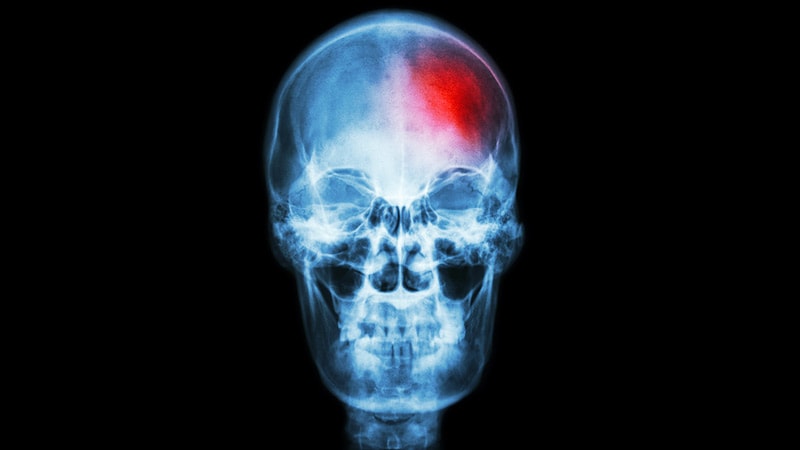Stem cell therapy improves motor impairment and is safe and well tolerated in patients with traumatic brain injury (TBI), results from a phase 2 trial indicate.

Dr Peter McAllister
“We proved for the first time that we can affect outcomes in moderately to severely disabled patients with TBI using stem cells,” study investigator Peter McAllister, MD, co-founder and medical director of the New England Center for Neurology and Headache, Stamford, Connecticut, told Medscape Medical News.
“I think the potential of regenerative medicine was always out there, but we are now getting to the point where we’re living up to that potential,” said McAllister, who is also an associate professor of neurology at Yale University School of Medicine in New Haven.
The findings were presented at the American Academy of Neurology (AAN) 2022 Annual Meeting.
No Effective Treatment To-Date
TBI can lead to motor deficits and chronic disability and currently there are no effective drugs to treat these deficits.
Researchers are increasingly focused on using somatic stem cells to restore lost function. Stem cells can differentiate or proliferate into different types of cells and are thought to promote repair and regeneration of tissues or organs damaged due to illness or injury.
The study included 61 patients with TBI with an average age of 34 years (70% male and 69% White). The mean time from injury was about 8 years and Glasgow Outcome Scale Extended (GOS-E) ranged from 3-6.
A total of 46 participants were randomly assigned to receive the stem cell therapy and 15 a sham procedure. In the treatment group, there were three different doses of cells (2.5 x 106, 5 x 106, 10 x 106).
The treatment involved an investigational regenerative cell medicine comprised of bone marrow-derived mesenchymal stem cells (SB623). The allogeneic cells came from a male donor.
For the 20-minute procedure, a neurosurgeon drilled a tiny hole in the skull and, guided by MRI, injected the stem cells into the area of the lesion.
Patients receiving a surgical sham procedure were brought to the operating room, anesthetized, and had a hole drilled into their head over the area of their lesion. However, the surgeon only went halfway through the skull bone.
Participants were instructed to do specific physiotherapy exercises at home every morning and afternoon for the first 6 months of the study.
The primary efficacy endpoint was change in the Fugl-Meyer Motor Scale score (FMMS). This scale is widely used for clinical assessment of motor function, including range of motion, walking, lower limb movement, and dexterity.
At 24 weeks, the change in FMMS score for SB623-treated patients (least square [LS] mean increase 8.3) compared with controls (LS increase 2.3) was significant (P = .04).
“When we looked at all the data at 6 months, the folks who got the stem cells did statistically significantly better than the group that got the sham,” and that improvement began within the first week or two, said McAllister.
“A Real Impact”
The treatment had a real impact on people’s lives, he said. “Some who couldn’t move their arm at all were able to put a nut on a bolt or brush their teeth, and some were able to button and unbutton where they couldn’t do that before.”
One teenager who was previously completely aphasic spoke an entire sentence.
Interestingly, the middle dose (5 x 106) had “by far” the best outcome, said McAllister. It’s not yet known whether the improvements will be permanent, he added.
At 48 weeks, treated patients enjoyed improvement over controls in secondary endpoints of the Action Research Arm Test (ARAT), which assesses grasp, grip, pinch, and gross movements; Gait Velocity (walking 10 meters); and NeuroQOL, a self-report measure of ability to carry out various activities.
However, although these endpoints were all numerically better in the stem cell groups, none reached statistical significance. This is likely because of the small study size and the fact the control group improved so much, said McAllister.
The exact mechanism of stem cell therapy is unclear, but researchers believe it “establishes a milieu of growth” for cells in the brain and promotes anti-inflammatory properties, said McAllister.
By 48 weeks, all study subjects had experienced at least one adverse event, with no differences between groups and no patient withdrawing as a result of adverse events. “There was no safety signal at all related to the stem cells,” said McAllister.
A larger phase 3 study of SB623 is planned.
The treatment may be useful in other conditions. A study in patients who suffered a stroke “just barely missed statistical significance” likely for methodological reasons and an older, sicker population, but the company plans to do another study in patients who were affected by stroke, said McAllister.
In addition, there may be potential for this approach with brain hemorrhage, Parkinson’s disease (PD), multiple sclerosis, and other brain-related disorders, he said.
‘Modern-Day Holy Grail’
Reached for a comment, TBI specialist Frank Conidi, MD, director of the Florida Center for Headache and Sports Neurology, said stem cell therapy is the most promising potential treatment for brain injury. “It’s the modern-day ‘holy grail.’ ”
In this study, “to see a modest improvement in gait in the primary outcome is impressive,” he said.
In addition, the fact the study didn’t have any significant or severe adverse outcomes “is promising,” he added.
Studies like this “are going to help to lay the groundwork for future studies and hopefully one day result in a safe, non-invasive treatment” for PD, Alzheimer’s disease, and disorders that affect the central nervous system such as spinal cord injury, said Conidi.
He noted this therapy involves an invasive procedure requiring implantation directly into the brain. “At present, there’s no way to get stem cells to cross the blood–brain barrier.”
In addition, although motor impairment is definitely a component of TBI, it’s not as prevalent as cognitive impairment, said Conidi.
The study was supported by SanBio Co Ltd. McAllister and Conidi have disclosed no relevant financial relationships.
American Academy of Neurology (AAN) 2021 Annual Meeting: Abstract 604. Presented April 5, 2022.
For more Medscape Neurology news, join us on Facebook and Twitter

